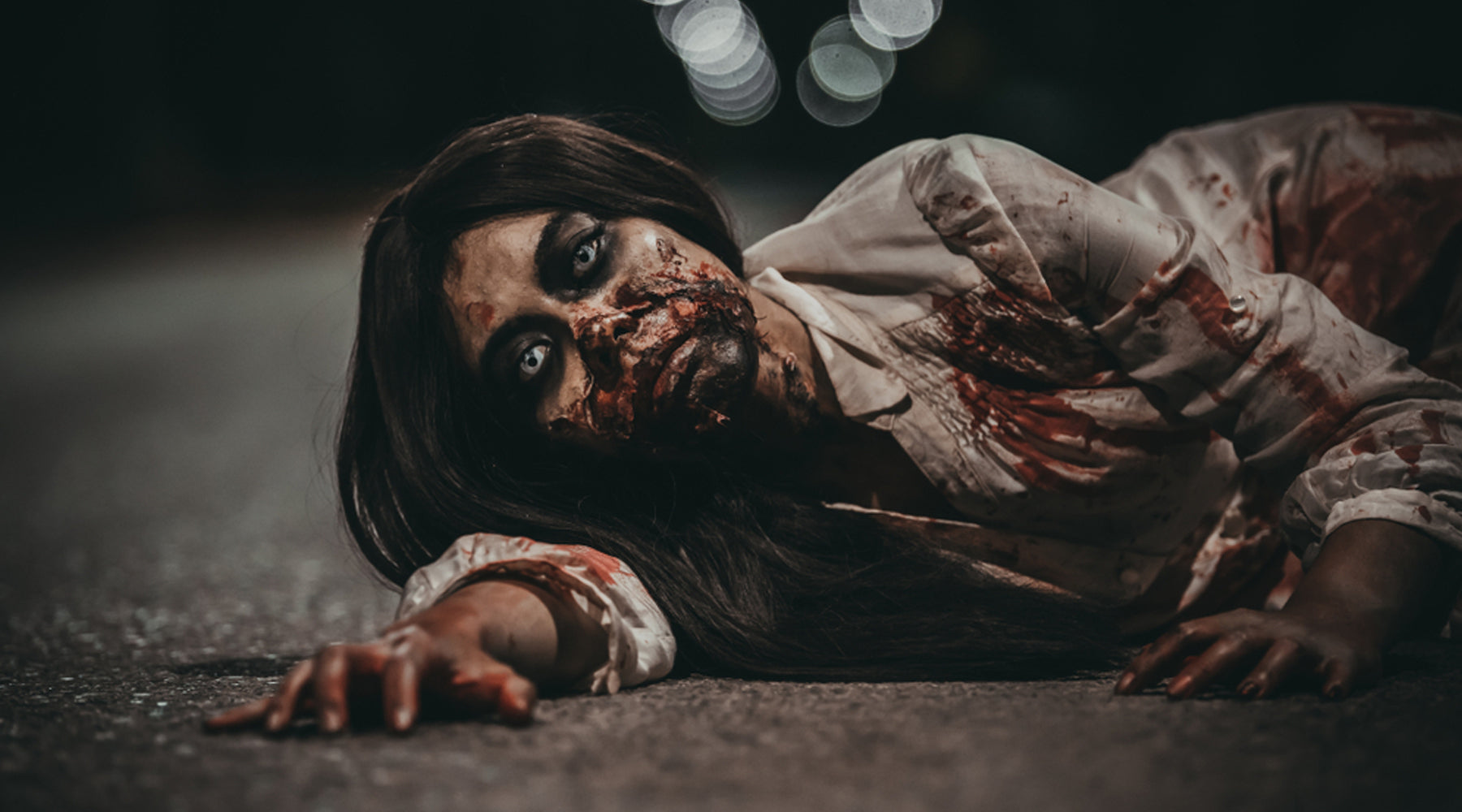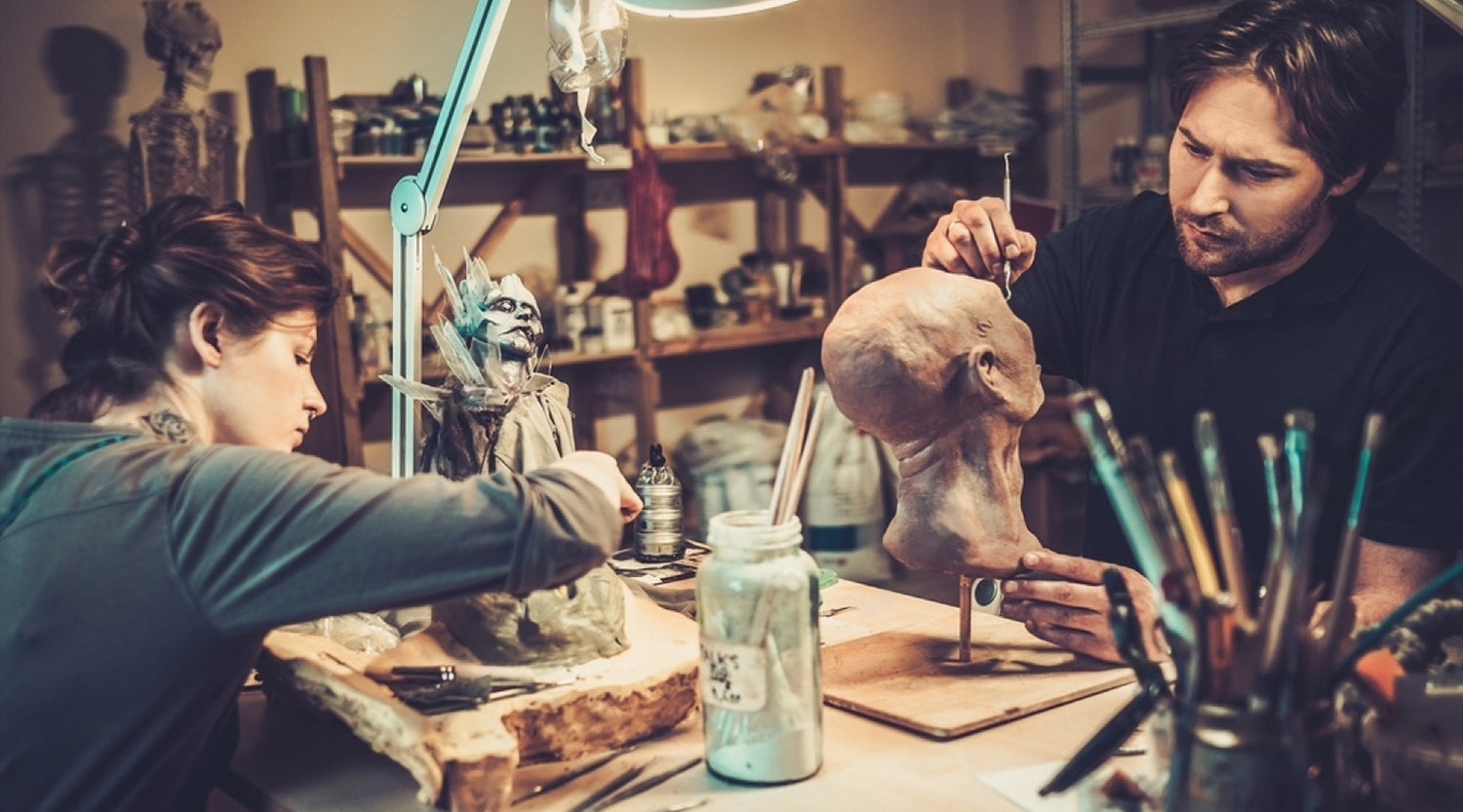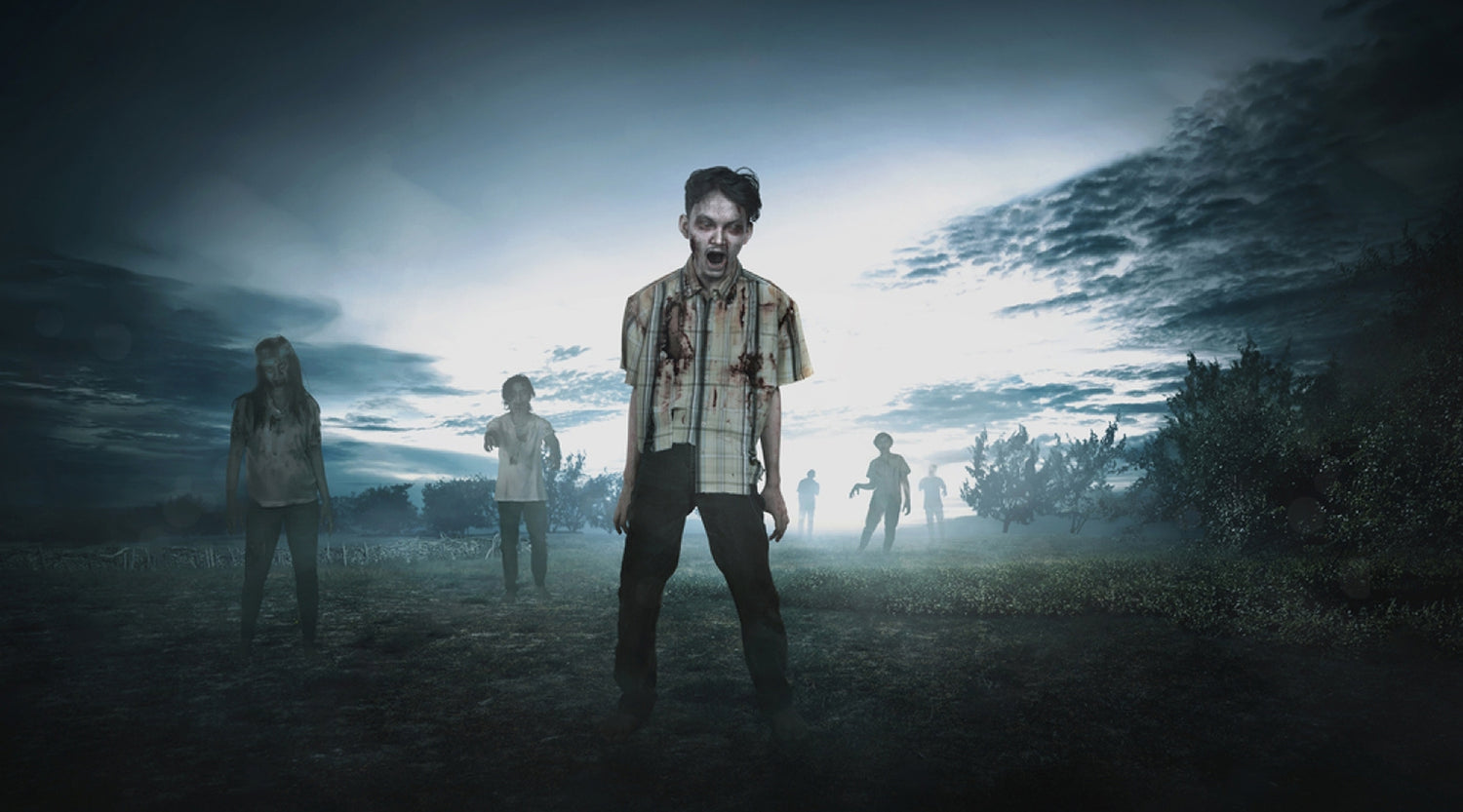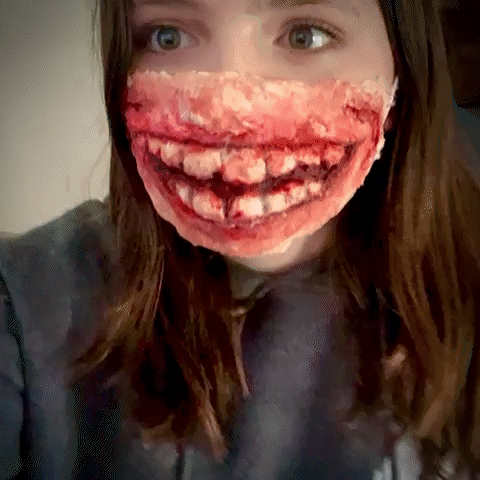SFX is used in almost every movie. It can be a simple bullet wound in an action thriller or a zombie transformation in a supernatural film.
However, nothing demands SFX like the horror genre. If you’re a fan of spooky movies, you’ll love this one!
In this blog post, I’ll talk about everything there is to know about SFX in horror movies.
But first, I’ll discuss special effects and the different types that make horror movies so scary.
Special Effects Explained
By definition, special effects create an illusion of something unreal. In other words, it's a visual trick movies play on us. Here, I'll briefly discuss the two types of commonly used SFX.
1. Mechanical Effects
This is where SFX makeup comes into play.
These special effects are created live on the set before the shooting starts. The transformation heavily relies on the use of cosmetic products and prosthetics.
2. Optical Effects
It's when movies use lights, camera position, etc., to create an illusion or, you can say, manipulate the actual scene so that it's entirely different for the viewers who are watching the film.
These fundamental elements combine to create the best SFX scenes: SFX makeup, sound effects, and visual designs.
The Key to Creating SFX Horror Looks
Scary makeup is one of the most significant factors in successfully executing a horror movie scene.
Yes, we now have advanced technology, but the realistic touch that makeup adds to the look remains unmatched.
Productions hire teams of SFX makeup artists responsible for creating the spookiest SFX looks on the actors. These artists and actors are at it for HOURS during the makeup process.
Yes, it's a time-consuming process, but the more time and effort the artist puts into it, the better the results. Nobody wants to see unrealistic, funny-looking ghosts in horror movies – am I right?
Unless that is the look of the show, of course.
Typically, the audience can spot digital effects. There's just something about using actual makeup on actors that makes the scary getup much more frightening.
Some classic horror movie SFX makeup looks include bruises, prosthetics application, cuts, scars, etc.
However, as important as makeup is in making the perfect horror movie, let's remember the other elements that, combined with the SFX makeup, make for a horror movie straight out of your nightmares!
Sound Effects
There are more effects in movies besides special effects. Sound is crucial in every film, and Horror is no different. Try humming the theme to Jaws or Halloween. Sound is vital.
Ever noticed the music buildup in a horror movie, and suddenly, it goes quiet just before a jumpscare? These scenes wouldn’t be as scary without the music.
Sound is processed in the same part of our brain that’s also responsible for emotions, hence the strong relationship between the two.
Sounds are essential in creating a feeling of suspense and thrill among the viewers. Some say it has the power to make or break a film!
Visual Designs
Visual designs play the next part.
Popular types of visual designing in movies include CGI, animation, 2D and 3D computer rendering, etc. These are added post-production.
A famous example of visual design in horror movies is the famous Nun character in The Conjuring series.
Visual designs take months and even years to flawlessly execute since they are a lengthy and complicated process. A team of VFX designers ensures the movie is as scary as they envisioned.
Parting Thoughts
Ghosts/monsters or such characters are the main attraction of horror movies. Hence, attention to detail is vital to pull off the spooky vibe. A lot of thought goes into creating the most horrifying characters that viewers will remember for days.
Keep following my blog for more tips and tricks on SFX Makeup!





